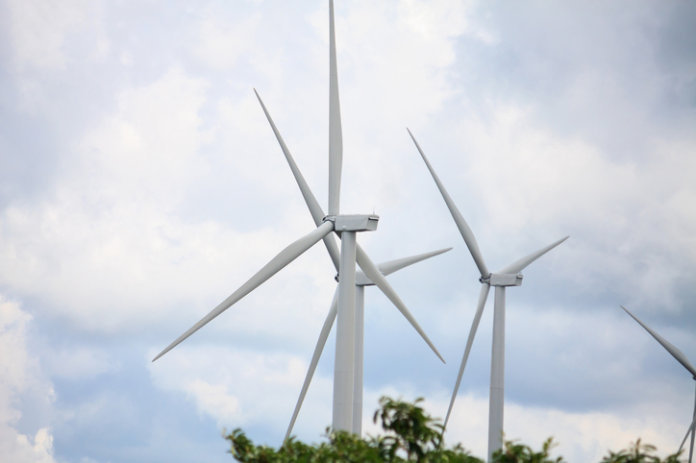The U.S. Department of Energy (DOE) has released its latest wind energy market reports, showing that as wind installations continue across the country and offshore wind projects move beyond the planning process, technology costs and wind energy prices are continuing to fall.
The reports cover three market sectors: land-based utility-scale wind, distributed wind and offshore wind.
The 2017 Wind Technologies Market Report, prepared by the DOE’s Lawrence Berkeley National Laboratory, found that the U.S. wind industry installed 7,017 MW of capacity last year, bringing total utility-scale wind capacity to nearly 89 GW.
In total, 41 states operated utility-scale wind projects. Texas leads the nation with over 22 GW of wind capacity, while Oklahoma, Iowa, California and Kansas have more than 5,000 MW each. In addition, another 13 states have more than 1,000 MW each.
In 2017, wind energy contributed 6.3% of the nation’s electricity supply, more than 10% of total generation in 14 states, and more than 30% in four of those states – Iowa, Kansas, Oklahoma and South Dakota.
The report notes that bigger turbines with longer blades are enhancing wind plant performance. The average generating capacity of newly installed wind turbines in the U.S. in 2017 was 2.32 MW, up 8% from the previous year and up 224% since 1998–1999.
Wind turbine equipment prices have fallen from their highs in 2008 to $800/kW–$950/kW now, pushing down project-level costs. The average installed cost of wind projects in 2017 was $1,611/kW, which is down a whopping 33% from the peak in 2009-2010.
Importantly, the U.S. wind industry reached a new high of 105,000 jobs and saw $11 billion invested in new wind plants in 2017, the report adds.
Lastly, with the federal production tax credit still available, forecasts for the domestic market show expected wind capacity additions of 8,000-11,000 MW/year from 2018 to 2020, the report says. The agency expects market contraction to happen in 2021 as the tax incentives are phased out.
The 2017 Distributed Wind Market Report, prepared by the DOE’s Pacific Northwest National Laboratory, says that in total, U.S. wind turbines in distributed applications reached a cumulative installed capacity of 1,076 MW last year. This capacity comes from roughly 81,000 turbines installed across all 50 states, Puerto Rico, the U.S. Virgin Islands and Guam.
In 2017, Iowa, Ohio and California led the nation in new distributed wind capacity installed as a result of large-scale turbines installed by commercial and industrial facilities and electricity distribution utilities, the report says.
In total, 35% of distributed wind projects installed in 2017 were at homes, while 25% were agricultural installations.
The report notes that U.S. manufacturers of small wind turbines and their supply chain vendors are located in 27 states. Between 2015 and 2017, U.S.-based small wind turbine manufacturers accounted for more than $226 million in export sales.
The 2017 Offshore Wind Technologies Market Update, prepared by the DOE’s National Renewable Energy Laboratory, found that the U.S. offshore wind industry recently took a leap forward as commercial-scale projects were competitively selected in Massachusetts (800 MW), Rhode Island (400 MW) and Connecticut (200 MW). New York, New Jersey and Maryland also have offshore wind projects in the development pipeline.
According to the report, the U.S. offshore wind project pipeline has reached a total of 25,464 MW of capacity across 13 states, including Rhode Island’s 30 MW Block Island Wind Farm, commissioned in 2016.
Furthermore, new offshore wind turbines are being developed with 10 MW to 12 MW of capacity. As a result, demand is increasing for specialized ships that will be able to install these very large structures in U.S. waters, the report says.
About 60% of the U.S. offshore wind resource lies in deep waters, according to the report, which adds that developing a project in deep waters requires wind turbines on floating foundations. Floating offshore wind projects have been proposed off the coasts of Maine, California and Hawaii.




